Please enjoy this short clip of Hemingway’s Life. Best, Christine
All about Hemingway
Please enjoy this short clip of Hemingway’s Life. Best, Christine
“[Ernest] Hemingway presents a difficulty, because he was abusive to women, and to other men, and most of all, to himself, committing suicide in 1961,” said Betty Jean Steinshouer, a nationally-acclaimed Chautauqua performer explaining why she turned to three of the women she has regularly performed in one-woman shows all over the country since 1988. “Fortunately, three of the women I portray were his contemporaries.”
Steinshouer’s performance style is audience-interactive, rather than theatrical, although what she does has been called “tour-de-force theater.” She aims to have an in-depth conversation with the audience, rather than lecture or merely entertain.
“On Hemingway” consists of three parts, in three women’s voices. First will be Willa Cather, who addresses Hemingway as part of the Lost Generation, that group of writers and ex-patriots who exiled themselves to Europe after World War I.
What Cather says about Hemingway “gets the ball rolling,” Steinshouer says.
“Cather knew him through his contemporaries, especially F. Scott Fitzgerald, but also because Hemingway was particularly nasty to her when she won the Pulitzer Prize.”
Act II is devoted to Marjorie Kinnan Rawlings, who shared an editor and publisher with Hemingway, and who adored him even as she realized his foibles. Steinshouer sees Rawlings’ as the most valuable perspective on this great macho-man writer.
“He who glorified bull-fighting, womanizing, and war can be seen from Marjorie’s view as a creative spirit, struggling to make himself understood, against the heavy odds that are placed on boys growing up in this society. Rawlings understood Hemingway as a man, which not many women do.”
In part three, the audience will have a rare opportunity to meet Gertrude Stein, who was Hemingway’s mentor in Paris, when he was working as a newspaper reporter for the Toronto Star and struggling to find his voice in fiction. Sorting out the love-hate relationship between Stein and Hemingway has been one of Steinshouer’s greatest challenges as a scholar.
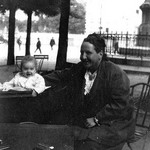
“It had a great deal to do with Alice B. Toklas and Hemingway’s need to prove his masculinity to absolutely everyone he met,” she said. “In Miss Toklas he found someone who was unimpressed with his bravado, and who defended Gertrude Stein at all costs.”
One of the most compelling aspects of “On Hemingway” is that each of the three women who speak of him preceded him in death. Cather died in 1947, Rawlings in 1953, and Stein in 1946. For Betty Jean Steinshouer, it lends an emotional impact to what they said, especially Rawlings.

“She says something quite prophetic, although she could not know that he would shoot himself less than a decade later.”
Marco Island Historical Society invites the community to attend a special presentation at 7 p.m., Monday, Jan. 22, in the Rose Hall Auditorium, 180 S. Heathwood Drive, Marco Island.
MIHS members are admitted free and non-members are asked to pay $10.
During the past year, I had a desktop calendar delivering me (mostly) daily doses of the “365 Greatest Things Ever Said.” While I could dispute the breadth of that claim, I did hang onto several items that struck a chord with me.
I’ll share a few of those words of wisdom with you:
“Unless you’re ashamed of yourself now and then, you’re not honest.” — writer William Faulkner.
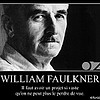
• “The best advice I’ve ever received is, ‘No one else knows what they’re doing either.’” — comedian Ricky Gervais.
• “In real life, the hardest aspect of the battle between good and evil is determining which is which.” — writer George R.R. Martin.
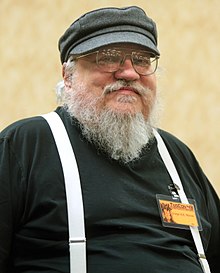
“Insane people are always sure they’re just fine. It’s only the sane people who are willing to admit they’re crazy.” — writer Nora Ephron.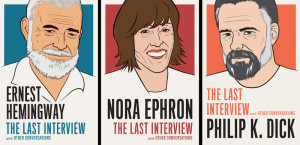
“We must believe in luck. For how else can we explain the success of those we don’t like?” — writer/filmmaker Jean Cocteau.
“It is more fun to talk with someone who doesn’t use long, difficult words but rather short, easy words like ‘What’s for lunch?’” — writer A.A. Milne.

“When you’re right, nobody remembers. When you’re wrong, nobody forgets.” — boxer Muhammad Ali
“Always do sober what you said you’d do drunk. That will teach you to shut your mouth.” — writer Ernest Hemingway.
“Never let your sense of morals prevent you from doing what is right.” — writer Isaac Asimov.
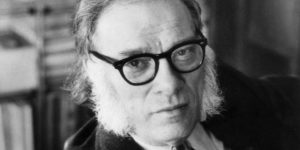
“Never eat at a place called Mom’s. Never play cards with a man named Doc. And never lay down with (someone) who’s got more troubles than you.” — writer Nelson Algren.
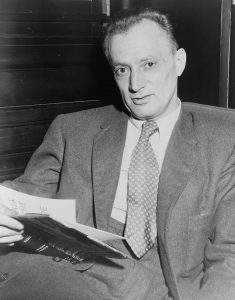
• “Honesty may be the best policy, but it’s important to remember that apparently, by elimination, dishonesty is the second-best policy.” — comedian George Carlin
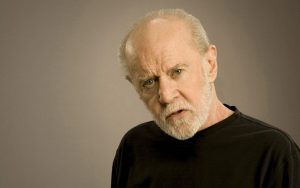
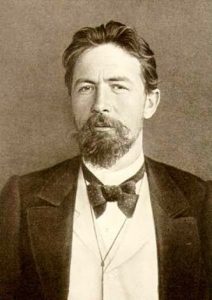
• “Love, friendship, respect do not unite people as much as a common hatred of something.” — writer Anton Chekov
•“You’re mad, bonkers, completely off your head. But I’ll tell you a secret. All the best people are.” — writer Lewis Carroll.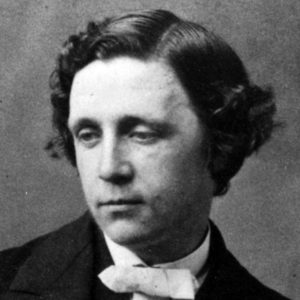
• “I am so clever that sometimes I don’t understand a single word of what I’m saying.” — writer Oscar Wilde
• “Character consists of what you do on the third and fourth tries.” — writer James. A. Michener.
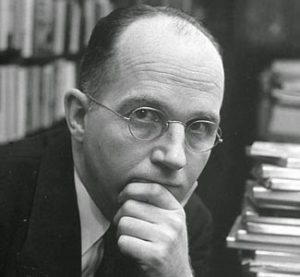
• “Love your Enemies, for they tell you your Faults.” — statesman Benjamin Franklin.
• “I believe in looking reality straight in the eye and denying it.” — humorist/writer Garrison Keillor.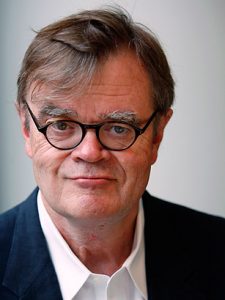
• And finally, if you crave something truly practical to take into 2018, consider these words from poet Maya Angelou: “History, despite its wrenching pain, cannot be unlived, but if faced with courage, need not be lived again.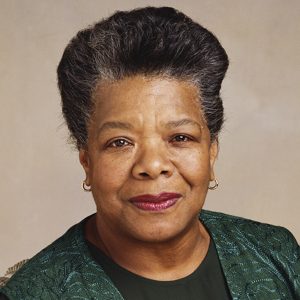
Follow @kelly_hertz on Twitter.
Part Two of Trivia:
7. James Joyce would get in bar fights and then have Hemingway beat the person up.
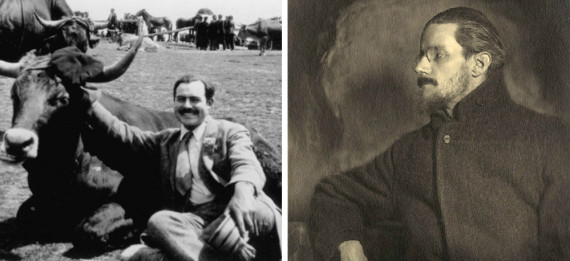
Kenneth Schuyler Lynn has a quote in his book, Hemingway, from the novelist about Hemingway and James Joyce’s hangouts together.
“We would go out for a drink,” Hemingway told a reporter for Time magazine in the midfifties, “and Joyce would fall into a fight. He couldn’t even see the man so he’d say: ‘Deal with him, Hemingway! Deal with him!’”
8. According to Hemingway, his eyelids were particularly thin, causing him to always wake at daybreak.
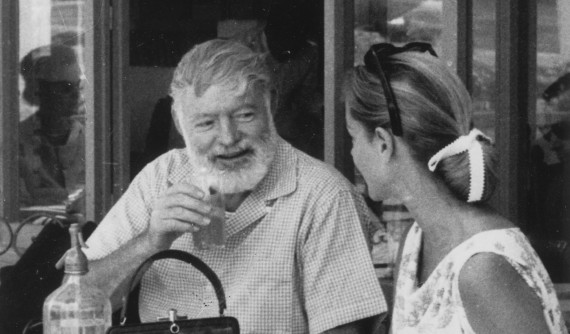
This also comes from the New Yorker profile, where Ross wrote, “He always wakes at daybreak, he explained, because his eyelids are especially thin and his eyes especially sensitive to light.”
Hemingway is then quoted as saying, “I have seen all the sunrises there have been in my life, and that’s half a hundred years.” Hemingway continues, “I wake up in the morning and my mind starts making sentences, and I have to get rid of them fast — talk them or write them down.”
9. His daily word count was tracked on a slab of cardboard on his wall.

American journalist George Plimpton interviewed Hemingway in a Madrid café during May, 1954. In his piece, Plimton writes:
He keeps track of his daily progress — “so as not to kid myself” — on a large chart made out of the side of a cardboard packing case and set up against the wall under the nose of a mounted gazelle head. The numbers on the chart showing the daily output of words differ from 450, 575, 462, 1250, back to 512, the higher figures on days Hemingway puts in extra work so he won’t feel guilty spending the following day fishing on the Gulf Stream.
10. The ending of A Farewell to Arms was rewritten 39 times.

Also in the Madrid café in 1954, Plimpton got a quote from Hemingway about rewriting the ending to one of his most famous works.
Plimpton asked how much rewriting Hemingway does, to which the novelist responded, “It depends. I rewrote the ending to A Farewell to Arms, the last page of it, 39 times before I was satisfied.”
The interviewer wondered, “Was there some technical problem there? What was it that had stumped you?”
Hemingway responded, “Getting the words right.”
11. This is how Hemingway said he wanted to spend his older days …

From the New Yorker profile, here is an extended description by Hemingway of how he would have ideally spent his older days:
“What I want to be when I am old is a wise old man who won’t bore,” he said, then paused while the waiter set a plate of asparagus and an artichoke before him and poured the Tavel. Hemingway tasted the wine and gave the waiter a nod. “I’d like to see all the new fighters, horses, ballets, bike riders, dames, bullfighters, painters, airplanes, sons of bitches, café characters, big international whores, restaurants, years of wine, newsreels, and never have to write a line about any of it,” he said. “I’d like to write lots of letters to my friends and get back letters. Would like to be able to make love good until I was eighty-five, the way Clemenceau could. And what I would like to be is not Bernie Baruch. I wouldn’t sit on park benches, although I might go around the park once in a while to feed the pigeons, and also I wouldn’t have any long beard, so there could be an old man didn’t look like Shaw.” He stopped and ran the back of his hand along his beard, and looked around the room reflectively. “Have never met Mr. Shaw,” he said. “Never been to Niagara Falls, either. Anyway, I would take up harness racing. You aren’t up near the top at that until you’re over seventy-five. Then I could get me a good young ball club, maybe, like Mr. Mack. Only I wouldn’t signal with a program—so as to break the pattern. Haven’t figured out yet what I would signal with. And when that’s over, I’ll make the prettiest corpse since Pretty Boy Floyd. Only suckers worry about saving their souls. Who the hell should care about saving his soul when it is a man’s duty to lose it intelligently, the way you would sell a position you were defending, if you could not hold it, as expensively as possible, trying to make it the most expensive position that was ever sold. It isn’t hard to die.” He opened his mouth and laughed, at first soundlessly and then loudly. “No more worries,” he said. With his fingers, he picked up a long spear of asparagus and looked at it without enthusiasm. “It takes a pretty good man to make any sense when he’s dying,” he said.
Below is the Huffington Post’s list of Hemingway Trivia BY TODD VAN LULING. A few were new to me. Best to all for 2018. Love, Christine
1. Hemingway apparently once lived, got drunk and slept with a bear.

Former New Yorker staff writer Lillian Ross had a long profile of Hemingway published in 1950.
During a section of the story where she’s at a bar with Hemingway, talking about bears at the Bronx zoo, Ross includes an aside about how the writer gets along well with animals, writing, “In Montana, once, he lived with a bear, and the bear slept with him, got drunk with him, and was a close friend.”
As this fact simultaneously seems insane and doesn’t readily appear elsewhere, it’s unclear whether Ross’ aside was an exclusive for her interview or if the story is more of a legend.
2. F. Scott Fitzgerald once had Hemingway look at his penis to judge if it was adequate.
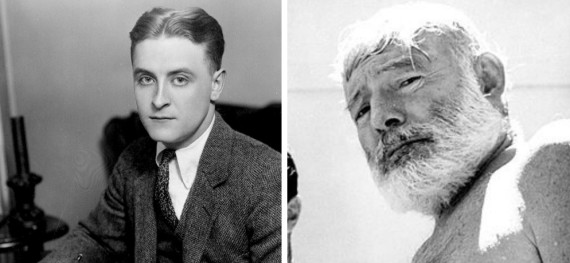
In Hemingway’s A Moveable Feast — a collection of stories about his time in Paris as an expat during the 1920s — there’s a long interaction with the Great Gatsby author, F. Scott Fitzgerald. In this exchange, according to Hemingway, Fitzgerald confesses that his wife, Zelda, said that his penis is too small or exactly, “She said it was a matter of measurements.”
Hemingway tells Fitzgerald to follow him to the men’s room and then says, “‘You’re perfectly fine,’ I said. ‘You are OK. There’s nothing wrong with you.” He continued reassuring Fitzgerald, “You look at yourself from above and you look foreshortened. Go over to the Louvre and look at the people in the statues and then go home and look at yourself in the mirror in profile.’”
3. Hemingway once said that he can’t think of any better way to spend money than on champagne.

Image: Getty
In the New Yorker profile from 1950, Hemingway gets frustrated at the group he’s having lunch with for thinking they can leave the table before all of the champagne is finished.
“‘The half bottle of champagne is the enemy of man,’” Hemingway said. We all sat down again,” writes Ross in the New Yorker.
Hemingway is then quoted while pouring more champagne as saying, “If I have any money, I can’t think of any better way of spending money than on champagne.”
4. The KGB secretly recruited Hemingway to be their spy, and he accepted.

According to a 2009 story in The Guardian, Hemingway went by the code name “Argo,” while somewhat working for the KGB. The article talks about the publication of Yale University Press’ Spies: The Rise and Fall of the KGB in America, which claims that Hemingway was listed as a KGB operative in America during Stalin-era Moscow.
According to the documents obtained by the book, Hemingway was recruited in 1941 and was fully willing to help, but never actually provided any useful information. It’s unclear if that’s because Hemingway was doing this all as a lark, or if he just wasn’t that good of a spy.
“The name’s Hemingway, Ernest Hemingway,” is a lot of syllables.
5. While in his later years, the FBI conducted surveillance on Hemingway.

Hemingway biographer and personal friend of the author for 14 years, A.E. Hotchner, wrote a New York Times opinion piece in 2011, claiming that Hemingway spent his last days incredibly paranoid that the FBI was following him and that this paranoia ended up being justified.
“It’s the worst hell. The goddamnedest hell. They’ve bugged everything. That’s why we’re using Duke’s car. Mine’s bugged. Everything’s bugged. Can’t use the phone. Mail intercepted,” Hotchner quotes Hemingway as telling him shortly after the author’s 60th birthday. Hotchner remembered thinking Hemingway was losing it as the author went on and on about how his phones were being tapped and his mail intercepted.
Hotchner was then shocked when the FBI released its Hemingway file due to a Freedom of Information petition, where they admitted Hemingway was put on the surveillance list in the 1940s by J. Edgar Hoover. “Over the following years, agents filed reports on him and tapped his phones,” Hotchner wrote. According to Hotchner, he’s had to find a way to reconcile his memories of Hemingway losing it in his final years — which partially led to extensive electroshock therapy — with the author actually being right.
6. Hemingway felt it “would be very dangerous” for someone to not attend multiple fights a year.
In that same New Yorker profile from 1950, Ross writes about what happened when she suggested what Hemingway thought was a lackluster fight:
Hemingway gave me a long, reproachful look. “Daughter, you’ve got to learn that a bad fight is worse than no fight,” he said. We would all go to a fight when he got back from Europe, he said, because it was absolutely necessary to go to several good fights a year. “If you quit going for too long a time, then you never go near them,” he said. “That would be very dangerous.” He was interrupted by a brief fit of coughing. “Finally,” he concluded, “you end up in one room and won’t move.”
Part two to appear in two weeks. Best, Christine
Good February to all: I saw this and thought it was fun and funny. Hemingway had his writing, his looks, his cats and dogs, his wit. However, he was not a fancy dresser at all and per wife # 3, Martha Gellhorn, who initially affectionately called him “the pig” and less affectionately when the marriage was sinking, he was not that big on grooming products. Still, this is interesting and fun. The Hemingway name sells furniture, booze, now grooming! Take a look. Best to all! Christine
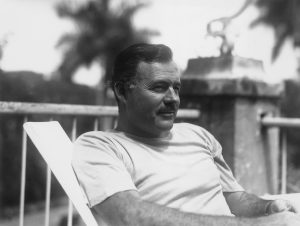
Ernest Hemingway Grooming Products Make Their Debut
Hemingway Accoutrements Product Line
Hemingway Accoutrements officially launches their line of premium shaving and skincare products available in the United States and Canada.
Having been in research and product development for well over a year, we are honored and excited to release world-class grooming products worthy of the Ernest Hemingway name. ”
— Allen Crawley
SCOTTSDALE, AZ, USA, January 31, 2018 /EINPresswire.com/ — Hemingway Accoutrements is excited to announce their new luxury line of men’s grooming products that bear the name of one of the most famous authors of the 20th century – Ernest Hemingway.
With that Hemingway creativity in mind, founder and entrepreneur Allen Crawley decided to revive the masculine grooming traits of an era gone by. Armed with an exclusive license and only the best botanical ingredients, Allen created Hemingway Accoutrements for the discriminating gentleman.
Reminiscent of the writings and travels of Hemingway, the products contain high-quality ingredients and pleasant, old-world aromas. The new line includes Aftershave tonic, Shave Crème, Post Shave Relief Balsam, Conditioning Beard Oil, Ultimate Strength Skin Repair & Remedy Salve and an Age Defending Facial Elixir.
“Having been in research and product development for well over a year, we are honored and excited to release world-class grooming products worthy of the Ernest Hemingway name,” said Crawley.
About:
Allen Crawley has always had a great love and passion for traditional wet shaving. A number of years ago a spark of nostalgia brought back memories of childhood barbershop visits and his father’s daily grooming routine. He longed to personally identify with this great tradition and began his own journey to bring those memories and traditions back to others. This led to the development and refinement of Hemingway Accoutrements. Please visit http://hemingwayaccoutrements.com for more information. Hemingway Accoutrements can also be found on http://facebook.com/hemingwayaccoutrements and http://instagram.com/hemingwayaccoutrements.
Allen Crawley
Hemingway Accoutrements
800-294-7066
email us here
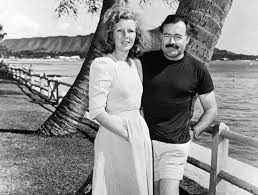

YUKON, Okla. — I’m sitting an office surrounded by books I’ve read time after time. Each word, each stanza says something different yet I keep reading.
This is what it must feel like to be religious and captured by something through and through.
Each day, I attempt to write something new and original in hopes to capture the spirit of something yet to be said.
This, and many other lessons, I learned from one of the greatest American writers who ever lived.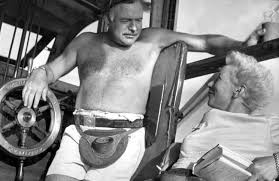
Ernest Hemingway is more than a writer; he is something which doesn’t pass through life often.
Hemingway was a man of originality who cursed clichés and lived as though death bit at his heels. Eventually, he would give up running.
I began reading Hemingway shortly after high school. As an 18-year- old who had grown up in the small, yet growing, town of Yukon, culture was a commodity few and far between. It was as barren as it was lonely. At the time, I was reading pieces from writers like Fitzgerald, Ezra Pound and T.S. Eliot. They were powerful yet they lacked a punch I wanted to read.
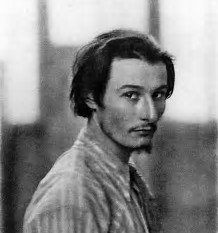
It wasn’t until a trip to Half-Price Books which my perspectives would change.
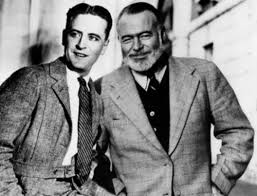
A blue book was fringed on the corners from being dropped too often. In silver letters, it read A Farewell to Arms by Ernest Hemingway. As a literary nerd, I had heard the name yet the words and meanings were not there yet.
Since this time, I have read all but two of Hemingway’s pieces. In a near obsessive state, I have found a voice which echoes through the halls of time and continues to speak to those tired of the monotony of modern living.
With each novel and short story, Hemingway provides a lesson for each reader. This should be the goal for any writer worth his or her words. Without meaning, a writer is no more than words on a deaf ear.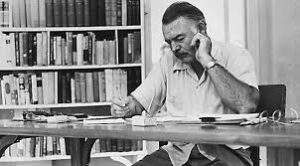
Before reading Hemingway’s work, I would find myself asking questions that people could only speculate the answer to. By the time I was finished, I would wonder why I hadn’t thought of that solution before. Though his work deals with death and despair mixed with the feelings of age and war, Hemingway shows us that the world can be seen in any light.
Subjects like love and loss are covered in almost every piece of work. It’s easy to summarize the passing of someone you once loved as painful. It’s quite another thing to express it the way Hemingway did.

For most readers, we all have experienced what it’s like to fall in love with someone and have the hands of death snatch them before their time.
At least I have.
The lessons of Hemingway can give those without a voice a map to find how to express themselves. This is the problem with society as it progresses; just because civilization continues to survive does not mean that civilization grows.
For you, the reader, when was the last time you picked up a novel and read it for what it was worth? When was the last time you enjoyed yourself as you read something so profound that you could feel it touch your heart?
According to the PEW Research Institute, 26 percent of American adults have not read a single book over the past year. This means that no new ideas and possibly no creative endeavor has been established in over a year.
I could list every reason as to why you should learn the lessons of Hemingway but nothing good ever came free. As I’ve learned from Hemingway, “there is no friend as loyal as a book.”
Lessons come by easier for those wanting more out of life. Complacency is a mutual dish that is best served to those who want to survive. For writers and free-thinkers like Hemingway, there is more to life than survival.
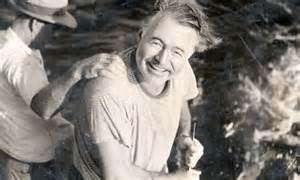
It’s the stakes of being original and true. Listed below are the books that have helped me deal with certain issues. If you are interested, please invest in your local library and read on.
To quote Hemingway, “All you have to do is write one true sentence. Write the truest sentence that you know.”
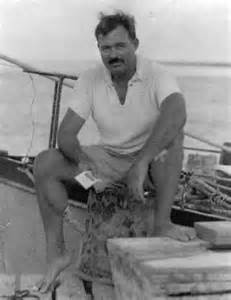
A Farewell to Arms: Depression, death and love
The Sun Also Rises: Masculinity, maturity and adventure
The Old Man and the Sea: Aging, death, trying against all odds
For Whom the Bell Tolls: War, destruction, and courage
A Moveable Feast: Dealing with family, memories, and depression
The Garden of Eden: Skepticism, faith and originality
“For a true writer, each book should be a new beginning where he tries again for something that is beyond attainment. He should always try for something that has never been done or that others have tried and failed. Then sometimes, with great luck, he will succeed.” ~ Ernest Hemingway

Continuing thoughts on the book by Nicholas Reynolds:
A good portion of the new book deals with Hemingway’s participation in World War II and the liberation of Paris. As those of you who follow this blog know, Hemingway had been working out of Cuba as the “crook factory” and it actually was more than fun and games. He kept very careful journals/records of what he and his gang saw. His crew ran from the former military people, friends, Jai Lai players, gamblers etc., and all kept alert for German submarines that were trolling the Caribbean.
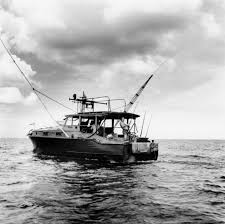
However, when wife Martha Gellhorn became more actively involved as a war correspondent for Colliers, she very much wanted him to join her in Europe. He initially resisted, but finally did accept a position as a war correspondent.
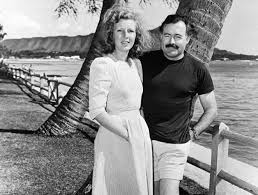
Based on Reynold’s research, Hemingway actively participated in the fighting and in pitching in wherever needed. It was there that he met a friend who would be very close to him for the rest of his life, Colonial Lanham, a British officer known as “Buck” Lanham. Lanham was forever grateful for the friendship and was shocked that Hemingway, as a journalist who did not have to go into dangerous situations where he could be killed nevertheless did.
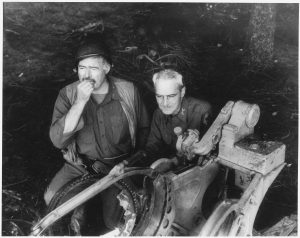
On one occasion, Hemingway had to cross a line of fire in order to get a message to the other side. Many had been shot trying. Hemingway was a lot of things that weren’t good and he could be a fairly obnoxious drunk. However, he was not lacking in true courage or in caring about other soldiers or people suffering. Lanham indicated in his writings that he would remember that moment for the rest of his life, seeing the big man – thus a large target – darting and running to get across.

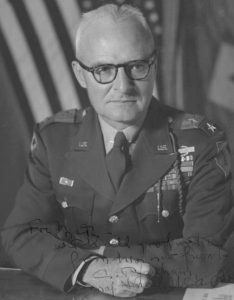
Hemingway was so involved in the actual doing of things – his regiment of irregulars thought he was their leader despite knowing of course that he was the author and journalist, not a military commander – that charges were brought against him for violations of the protocols of war journalism. He ultimately was cleared of any wrongdoing but there’s no question that other journalists resented him and his notoriety and fame and his jumping into the action.
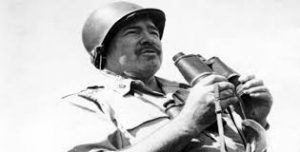
Hemingway was on the FBI watch list as a result of his activities in Spain and was eyed with suspicion by J. Edgar Hoover for that, as well as for living in Cuba. That surveillance which many thought was imagined by Hemingway was in fact real and fed into the paranoia he had in the last year of his life.
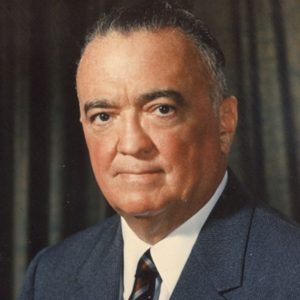
All in all a very good book that concludes Hemingway was not a spy per se. At moments, he was sought out by the Russians who would have liked to recruit him but who did not learn anything harmful to the U.S. Hemingway was too much of a dedicated American for that.
Happy New Year all readers of Hemingway! Hope you had a great holiday season!
I just listened with interest (via audio disc) to the new book about Hemingway’s involvement in soviet politics and communist causes. The book is called Writer, Sailor, Soldier, Spy by Nicholas Reynolds. I’m very familiar with Hemingway’s left-leanings, although my reading suggests not so much left-leaning as anti-fascist leanings. Even by those that would like to argue that he was very involved in communist causes, there is acknowledgement that his greatest leaning was the belief in the individual, which he felt fascism and communism both suppressed.
Reynolds traces the roots of his advocacy to the Key West hurricane of 1934 in which numerous veterans working for the New Deal were killed and left to decay on the beaches. Hemingway blamed the government for indifference. Generally he was on the side of the underdog. In the Spanish Civil War, it was evident that he was more anti-fascist than pro-communist. Still he was actively involved in the movie The Spanish Earth, a film advocating for the anti-Franco rebels, and did most of the narration. He also wrote the play The Fifth Column about that war.

During his involvement in the Spanish Civil War and his frequent trips to Spain in the late 30s to cover the war and write about the war, it was clear to me that, unlike some journalists and sympathizers with the Republicans (the left side if we have to put labels on it, those against Franco), he was one of the few who was not just an observer but was willing to put his money and his life where his mouth was.

He provided the funding for the completion of The Spanish Earth when money ran out. There also was an interesting anecdote about Hemingway being in Spain with another journalist when the car in front of them was attacked and rolled over, its inhabitants gravely wounded, Hemingway jumped out of his vehicle and immediately was providing emergency medical aid and doing anything he could to assist. (He was an ambulance driver in World War I so did know some techniques. His father also was a doctor and he had some exposure to medical procedures during his youth).
ME: FYI. The Spanish Earth is available for viewing on YOUTUBE. About an hour long. Hemingway in NYC introduced it in a showing to raise money for the Republican cause.
The other journalist just continued taking notes and not lending a hand. Hemingway yelled at him to pitch in or he, Hemingway, would kill him. Numerous times when Hemingway could have been sitting comfortably in Key West or in Cuba, he put himself in dangerous situations. He was a person who believed the individual could make a difference in general, and that included him. He was fairly apolitical, but, that being said, he did take a stance against Hitler and the fascists and was really upset, as was his wife to be, Martha Gellhorn, a journalist in her own right, with the British and the French for not coming to the assistance of the Spanish Republicans.
Hemingway’s frequent visits to support the Republican cause also was crucial to his writing of For Whom the Bell Tolls. The hero in For Whom the Bell Tolls, Robert Jordan, was fighting for the Republicans and the book covers four days in which he’s tasked with blowing up a bridge that will halt the fascists’ progress when an offensive begins. Nevertheless, while exposing the atrocities of the fascists, For Whom the Bell Tolls also doesn’t sugarcoat some of the poor behavior by the communists. For that, he was roundly criticized by his leftist friends. He replied that he tried to tell the truth from both sides.
To be continued